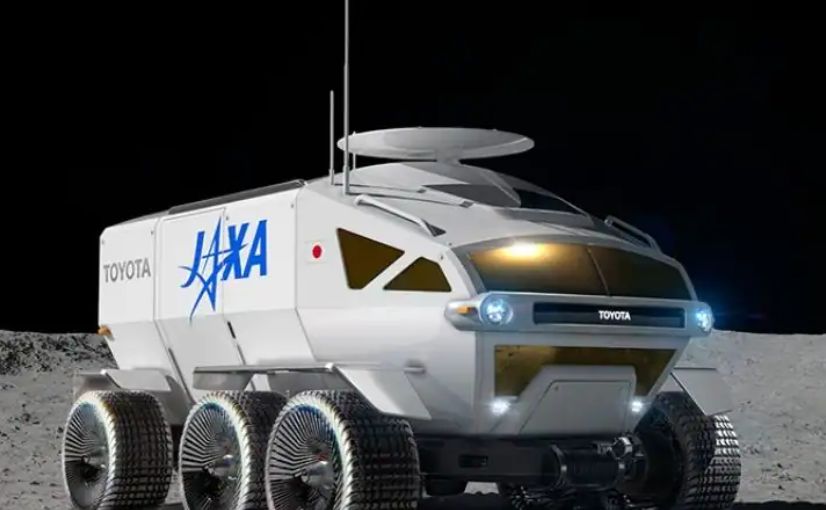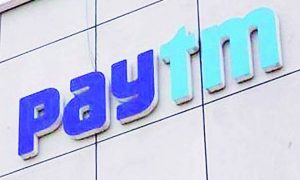Toyota is working with Japan’s space agency, the Japan Aerospace Exploration Agency (JAXA), to develop a vehicle that will explore the lunar surface. Toyota aims to help people live on the Moon by 2040 and subsequently on Mars. (Photo: Toyota)
New Delhi: Japanese automotive manufacturer Toyota Motor Corporation (Toyota) is working with Japan’s space agency, the Japan Aerospace Exploration Agency (JAXA), to develop a vehicle that will explore the lunar surface. Toyota aims to help people live on the Moon by 2040 and subsequently on Mars, company officials told The Associated Press (AP) Friday.
The vehicle, which Toyota is developing with JAXA, is called Lunar Cruiser, and is slated for launch in the late 2020s. The name pays tribute to the Toyota Land Cruiser sport utility vehicle, according to the AP report.
How Will The Lunar Cruiser Benefit People?
Takao Sato, who heads the Lunar Cruiser project at Toyota, said the vehicle is based on the idea that people eat, work, sleep, and communicate with others safely in cars, and that the same can be done in outer space, according to the report.
“We see space as an area for our once-in-a-century transformation. By going to space, we may be able to develop communications and other technology that will prove valuable to human life,” Sato was quoted as saying in the report.
Gitai Japan Inc., a robotics startup, has contracted with Toyota to develop a robotic arm for the Lunar Cruiser. The arm is designed to perform tasks such as inspection and maintenance, the report said.
The arm has a “grapple fixture” feature, which allows the arm’s end to be changed. As a result, the arm can work like different tools, and perform activities such as scooping, lifting, and sweeping.
According to the report, Gitai Chief Executive Sho Nakanose said that he felt the challenge of blasting off into space has basically been met. But, working in space entails big costs and hazards for astronauts, he further said.
Nakanose said that is where robots would come in handy.
Ever since Toyota was founded in August 1937, the company has been worried about losing a core business because of changing times, the report said. The Japanese automotive manufacturer has ventured into housing, boats, jets, and robots.
The company also has net-connected sustainable living quarters near Mount Fuji, called Woven City, which is “pioneering a profound evolution of how societies of the future live, work, play, and move,” according to the official website of Woven City.
Woven City is an opportunity to, “come together to heal, to grow, to learn, and to create new possibilities for a collective future,” the website said. Construction at Woven City is starting this year, the AP report said.
Japan’s Spacefaring Ambitions
Moreover, Japan’s fascination with space and the Moon has been increasing. In December 2021, Japanese billionaire Yusaku Maezawa launched aboard a Russian-built Soyuz capsule, to the International Space Station, as part of the Soyuz MS-20 mission. He was accompanied by his production assistant Yozo Hirano and Russian Alexander Misurkin.
Maezawa, Hirano, and Misurkin spent 12 days in the orbiting laboratory. During his stay, Maezawa also recorded videos of himself performing different activities on the space station.
The billionaire has also booked an orbit around the Moon aboard Tesla CEO Elon Musk’s Starship, according to media reports.
Quoting Toyota engineer Shinichiro Noda, the AP report said that sending Toyota’s cars to the Moon is the company’s mission. He further said that Toyota has vehicles almost everywhere, but this is about taking the company’s cars to somewhere it has never been.
He said he is excited about the lunar project, which is an extension of the automaker’s longtime mission to serve customers, according to the report.
Noda said that the moon may provide valuable resources for life on Earth.
In March 2019, JAXA and Toyota had announced their agreement to consider the possibility of collaborating on international space exploration. The Japanese space agency, and the automotive manufacturer had reached an agreement to further cooperate on, and accelerate their ongoing joint study of a manned, pressurised rover that employs fuel cell electric vehicle technologies, according to an official statement issued by Toyota.
The statement said that such a form of mobility is deemed necessary for human exploration activities on the lunar surface. The pressurised rover would have a total lunar-surface cruising range of more than 10,000 kilometres, even with the limited amount of energy that can be transported to the Moon, according to the statement.
According to the concept proposal for the pressurised rover being studied by JAXA and Toyota, the length of the lunar vehicle will be six metres, width 5.2 metres, and height 3.8 metres, the statement said. The vehicle would be about the size of two microbuses.
With a living space of 13 cubic metres, the Lunar Cruiser will be capable of accommodating as many as two people, and four people in case of an emergency, the statement said.
Quoting JAXA President Hiroshi Yamakawa, the statement said that having Toyota join JAXA in the challenge of international space exploration greatly increases the space agency’s confidence. He said that manned rovers with pressurised cabins are an element that will play an important role in full-fledged exploration and use of the lunar surface. he added that through the joint studies going forward, JAXA would like to put to use Toyota’s excellent technological abilities related to mobility, and that they look forward to the acceleration of their technological studies for the realisation of a manned, pressurised rover.
JAXA Vice President Koichi Wakata said that various scenarios as well as technologies
that will be applied to specific space missions were being studied at JAXA, according to the statement. He added that manned, pressurised rovers will be an important element supporting human lunar exploration, and JAXA envisions this will take place in the 2030s.
“We aim at launching such a rover into space in 2029,” Wakata was quoted as saying in the statement.
Toyota and JAXA have been jointly studying the concept of a manned, pressurised rover since May 2018.





































